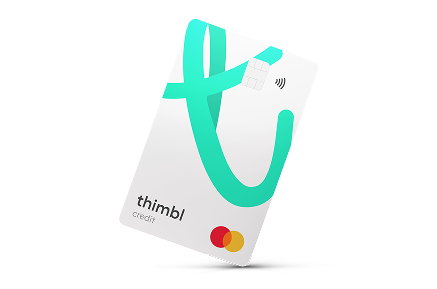The History of Credit Cards in the UK
Harry Lawrance - Marketing Manager | 18th April, 2023

Credit cards in the UK: where did it all begin?
It can be hard to imagine a time before credit cards for UK citizens were available.
However, it was only relatively recently that credit cards in the UK arrived – almost 10 years after they were first introduced in America. Since then, UK credit cards have revolutionised the financial services industry with 59 million in circulation as of February 2022 [1].
Breaking the Cycle
Without an established market, aspiring credit card providers faced a chicken-and-egg like challenge:
How do you encourage consumers to use a credit card that isn’t accepted in any shops, bars or restaurants? Equally, how can you encourage merchants to accept a credit card that consumers are not using?
Long before the launch of the first UK credit card, Bank of America issued the BankAmericard in 1958 [2]. They became the first to break the cycle which changed the financial services industry forever.
What did they do differently to everyone else?
Rather than spreading their efforts thin, they strategically chose to launch the card in Fresno, California, where almost half the residents banked with them. Each one received a BankAmericard in the post.
As a relatively new invention, the issue and use of credit cards were largely unregulated. This meant Bank of America was able to send cards to all 60,000 of their customers in this area without the need for an application or approval process. [3]
As so many consumers had access to a new means of spending, it simply didn’t make commercial sense for merchants to carry on refusing it in their stores.
Just like that – credit cards took off for the first time in history.
Crossing the Atlantic
It wasn’t until 1966 that credit cards made it across the Atlantic to land in the UK. [4] During this time, the BankAmericard had been rebranded as Visa, and licenses were issued for other banks to offer their product. Under this license, Barclays presented the first UK charge card as Barclaycard. [5]
Charge cards are a little different to the credit cards that are now widely used. Unlike a credit card, which offers the flexibility of spreading payments over several months, the balance on a charge card must be paid in full after every monthly statement. Though charge cards did offer a way of deferring costs until payday, extended credit limits and minimum payments weren’t available until several years later, and after a few other players had entered the market.
The Monopoly Comes to an End
In 1972, the credit card market became a little more competitive.
Barclaycard’s monopoly came to an end and, although far from the options we have available today, for the first time in history UK consumers had choice between credit cards.
This happened when competitor banks Lloyds Bank, Midland Bank, National Westminster Bank and Royal Bank of Scotland/Williams and Glyn's Group came together to form the Joint Credit Card Company. Under this brand, they released the Access credit card.[6]
For just over a year, Access and Barclaycard had free reign of the UK credit card market. Each took advantage of policies which encouraged competition by allowing providers to set their own interest rates.
This freedom was short-lived.
Soon after the competitive landscape shifted, new legislation was introduced to impose stricter rules on the two credit card providers and increase the minimum payment requirements. By reducing the amount of time it took consumers to repay their debts, credit card company profits were slashed as the interest accrued took a hit.[7]
These themes are continued in the regulation of the financial services industry today. Regulators must seek to strike a balance between achieving the best protection for consumers while encouraging healthy competition and profitability for financial companies which make a huge contribution to the UK economy.
Wondering what happened to Access? You’ll certainly have heard of Mastercard – the successor that replaced it in 1996.[8]
Goodbye signatures, hello security
The beginning of the 21st century saw further advances in credit card technology.
Originally, credit cards featured a magnetic strip which would be swiped in a terminal to authorise payment. Any customer using their card would then need to sign the printed receipt, which the merchant needed to check against the signature on the rear of their card.
This process continued up until the early 2000s until the introduction of chip and PIN technology.[9] Still used by many today, this meant that credit card payments couldn’t be authorised without the right four-digit code known exclusively by the cardholder – a pivotal step forward for credit card security.
Tap and go arrives
As an alternative to chip and PIN, Barclays pioneered another new feature within the industry in 2007.[10] Their customers were the first in the UK to be able to request contactless credit cards that allowed users to make payments without the need to pass any security check.
This “tap and go” technology made credit card transactions faster than ever. Due to fears of fraud, contactless payments were capped at just £10 for the first few years.[11]
Following its success, debit cards also adopted the contactless feature several years later.
As the initial concerns over security wore off and the shift towards a fully digital world continued, the contactless payment limit gradually increased all the way up to £100 by 2021.[12]
No card? No problem
Now, some contactless transactions don’t even require a card.
Both Apple Pay and Google Pay allow users to make payments with their smartphone – or even their watch – as part of a mobile wallet.
As such, there is little need to carry a card anymore - in just 60 years it seems as though credit cards have come full circle.
Just a Piece of Plastic?
Credit cards have been on a long journey to get to where they are today.
Credit cards now make up an industry which generated an estimated £13.5 billion in 2022 in the UK alone. Worldwide, the figure was estimated to be closer to $103 billion in 2021.[13]
Despite the initial struggle to succeed, this small piece of plastic has had a huge impact on the global economy.
Did you find this article helpful?
Let us know how we can be more helpful
Please leave your anonymous feedback to help us keep improving.
About the author
10+ years financial experience







